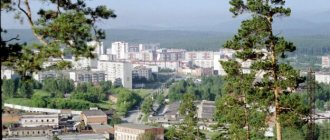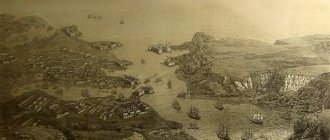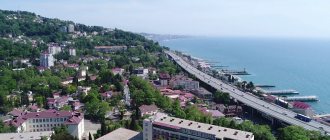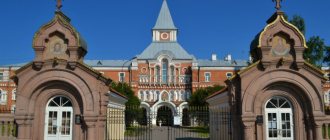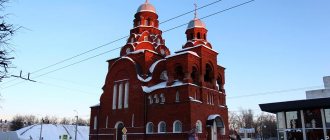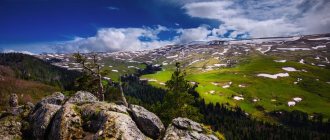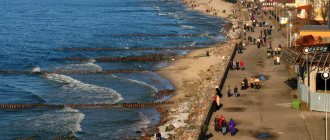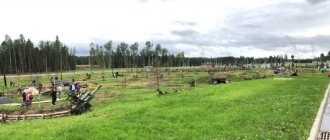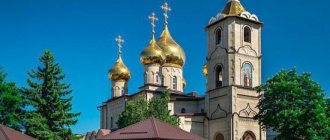Abkhazia is a country of natural wonders, friendliness and hospitality, excellent cuisine and rich history. It stretches on the shores of two seas - the Ionian and Adriatic, and in the inland there are several large lakes with incredible turquoise water. Most of the Abkhaz territory is mountains, dizzying with their beauty and hiding cozy castles and ancient fortresses among green forests and well-groomed groves. In every Abkhaz city, parks and squares, gardens and museums, fortresses and statues await tourists. The attractions of Abkhazia are varied and numerous. Where to start?
Lake Ritsa
Although the country is small, when a tourist arrives here, he often finds himself in a dilemma - where to go on excursions in Abkhazia first? Guides recommend starting from Lake Ritsa. It is compared to a magical portal and called the most magical place in the world. The alpine lake, 2 km long and 131 m deep, is filled with clean, transparent water, so the bottom can be seen even through a 10-meter thickness. Ritsa is located in the northwestern part of the country on the territory of a national relict park named after the lake. The park was founded in 1996, occupies 40 thousand hectares and territories from close to sea level to 3 thousand km rising into the sky. The lake itself is located at 950 meters above sea level and is of glacial-tectonic origin.
They say that in the past a turbulent mountain river flowed on the site of the lake. Due to the earthquake, part of the Pshegishkha mountains collapsed, stones fell into the Lashipse riverbed, forming an insurmountable barrier to water. This happened approximately in the 18-19th century. The modern lake is located in a bowl of the Atsetuk, Arikhua, and Pshegishkha mountains. Since this is a mountain reservoir, the water in it is cool - no warmer than 18 degrees. In winter the surface freezes. The color of the lake depends on the climate, weather, and time of year: in summer it is yellow-green, in the cool season it is blue-blue. Several rivers and streams flow into the lake, and the Yupshera River flows out.
It is better to enjoy the nature of the main attraction of Abkhazia as part of an excursion tour. Mostly these are day-long programs that involve a transfer from the resort to a high-mountainous area, an hour's rest on the lake, sightseeing, visiting the embankment and restaurants. The pristine appearance of the mountain lake has made Ritsu a must-visit destination. Some even say: if you haven’t been to Ritsa, you haven’t been to Abkhazia.
It is not possible to get to the lake by public transport. There are two main options – a trip with a tour or on your own by car. You can order a taxi, but this service is expensive. On the territory of Ritsinsky Park you can spend the night in the boarding house "Audhara", offering houses for 5 residents. For those who like to spend the night outdoors, the best option is to pitch a tent. If you don’t have any equipment with you, you can rent a tent and bedding. In addition, catamarans are available for rent on the lake, and there are places for amateur fishing (equipment is available for rental). An excursion to Lake Ritsa departing from Gagra can be found here:
On the way to the incredible Ritsa - Blue Lake. An unusual local legend is associated with this region. In the past, a wise hermit lived in a cave near a pond. Once he sheltered robbers for the night and paid for it with his life. That same night, the waters of the lake turned the color of his eyes. Scientists explain the origin of the color more simply - the bottom is covered with lapis lazuli (blue rock).
Route around Abkhazia
Our route around Abkhazia included mainly historical monuments, but since they were all located in very beautiful places, we can say that in each case it was a combination of natural and man-made beauties. The concentration of attractions in Abkhazia is such that there are enough of them for more than one trip. And when planning a route, you will have to choose every time what to see this time and what to leave for later.
We went to Abkhazia for the May holidays. May is a great time for sightseeing. It was not hot and not crowded. One day was rainy, the rest were sunny.
The border was crossed on May 2. We went through surprisingly quickly, there was no queue.
In my story, I did not adhere to chronology, I simply consistently described the sights of Abkhazia that we encountered on our way as we moved from the border with Russia deep into Abkhazia.
New Athos Cave
New Athos Cave is another natural attraction of the region. This cave is one of the largest in the world accessible to the non-specialist. It competes with the world famous Škocianska in Slovenia and Carlsbad in the USA. The internal cavity is estimated at 3 million cubic meters. This is a beautiful place that combines various reliefs: underground lakes, stalactites, stalagmites, frozen waterfalls. To enhance the atmosphere, local illumination with white and red lamps was organized, creating a mysterious atmosphere and allowing you to move around in the cave without additional lighting equipment.
It is better to see the cave as part of a group excursion - this way the risk of getting lost is minimal. All offers departing from Gagra can be found here:.
The attraction was discovered in 1961 by Givi Smyr, who eventually became the director of this place. Visitors have been allowed into the cave since 1975, but some parts are closed - only scientists work there, since human presence changes the microclimate of the cavities. The complex includes 11 halls, 6 of which are available to tourists on any day. The other five open according to an individual schedule.
The New Athos Cave is open daily in summer from 9 am to 7 pm; from October to May visitors are allowed 4 days a week. Admission for children under 8 years old is free; adults will have to pay 500 rubles. If filming is planned, an additional contribution is 50 rubles. Excursions to the cave are sold at ticket offices and travel agencies. Guests enter the inner area by small train and continue exploring the underground wildlife on foot. All the halls are safe, and the guides sincerely love what they do, so the visit leaves a strong impression. The temperature in the internal cavities is usually below 14 degrees, so warm clothing is needed for a comfortable stay.
Cave halls:
- Anakopia is the deepest, the first explored by a pioneer, and includes two underground lakes;
- Mahadzhirov is the largest hall of the complex, named in memory of the forced resettlement of Abkhazians to Turkey;
- Nartaa - a hall with a lake inhabited by crustaceans and walls covered with clay;
- Speleologists - the most comfortable room with a pleasant atmosphere, low humidity, warm air;
- Givi Smyr – a hall with a stone jellyfish and colored limestone walls;
- Ayukhaa is a huge hall with an unusual wall relief, black horizontal stripes on a yellow background and an abundance of red and yellow stalagmites;
- Apsny – a hall with a four-meter stalagmite and a 30-meter boulder along which water always flows;
- Apkhyartsa – a hall with the strongest acoustics, named after the folk musical instrument;
- Moscow is a predominantly closed, shallow hall;
- Corallite gallery - a hall with white corals fused along the walls;
- The helictite grotto is a hall where visitors are very rarely allowed due to the risk of harming nature. Helictites are stalactites that grow diagonally upward. In the New Athos cave, the helictites are red, pink, brown, and grow against the background of white walls. Next to them are many yellow, green, purple, red stalagmites.
What to see in central Abkhazia
Dolmen in Upper Esher
Note: the ancient dolmen is located on the private territory of a citizen of the village of Verkhnyaya Essera.
- Coordinates: 43.07795, 40.91048.
Cromlech in Lower Esher
photo: Cromlech in Lower Esher
Note: a piece of stones in the form of 4 circles of stones. The megalith is more than 4000 years old.
- Coordinates: 43.0202, 40.94935.
New Athos Monastery
Located near Mount New Athos, the New Athos Monastery is a temple complex of amazing grandeur and beauty. The golden domes are visible from afar, and the opportunity to touch the shrines attracts pilgrims from different parts of the world. The monastery is an important part of the culture, history, architectural and religious heritage of the region. It is located in the small village of New Athos deep in the mountains. The complex was founded by the Greeks in 1874, on the site where the relics of one of the apostles of Christ, Simon the Canonite, are buried. The remains of the saint were buried in the ground near the cave in which he spent his days praying. Tsar Alexander III allocated funds for the construction of the complex, and he also presented the monastery with musical chimes that decorate the monastery to this day. The complex includes 6 temples, and for its construction part of the mountain was removed, removing thousands of tons of rock. The site on which the monastery was built rises 75 meters above sea level, and the monks of the Panteleimon monastery helped build the road to it. In 1878, even before construction was completed, the monastery was attacked and robbed, but two years later restoration work began. The consecration took place in the second autumn month of 1900. Before the revolution, the New Athos shrine was a key spiritual center. In Soviet times, the monastery housed a warehouse, a museum, and a military hospital.
Religious reconstruction began in 1994. The most active restoration was required for the Church of St. Panteleimon. Now the monastery holds services, receives pilgrims, and welcomes curious tourists. Anyone can touch the shrines, offer prayers for family and friends, and enjoy the good atmosphere of forgiveness and absolute gratitude.
The monastery includes churches:
- Martyr Hieron;
- Andrew the First-Called;
- Ascension of the Lord;
- Icons of the Mother of God;
- Reverend Fathers of Athos;
- Panteleimon Cathedral.
The monastery was built in the neo-Byzantine style and is open to guests all year round, but the most convenient time to visit is the summer season. To get inside, women need to wear a long skirt and cover their shoulders and head. Men are required to remove their hats, cover their shoulders, and wear long pants. Guests of Abkhazia staying in New Athos will find excursions to the monastery and other attractions of the region here:.
Smetsky Castle
The castle is a huge building consisting of two buildings built in 1902 and 1913 according to the ideas of the outstanding personality Nikolai Nikolaevich Smetsky, a Russian philanthropist and entrepreneur. The complex is located in the Gulripsh region of Abkhazia.
Smetskoy made a huge contribution to the development of the region, to the development of science, culture and the economy of Abkhazia. With his help, a beautiful garden was laid out, which was planted with exotic plants brought from different parts of the world. Later the park became the Sukhumi Arboretum. According to Nikolai Nikolaevich’s plan, several sanatoriums were built for people suffering from pulmonary diseases. Smetsky’s desire was to help people heal with the healing air of Abkhazia
On the rocky platform there are two medical buildings of one of the sanatoriums - White and Red. A small White building and a huge four-story Red building, which is called the Palace or Castle. The building truly became a Palace in terms of architecture and a Palace of Hygiene in terms of its purpose, thanks to the fact that it was created with the latest technology and hygiene. It had its own hydropathic clinic, inhalator, telephone, post office, carriages, and in the dining room they set up a stage for theatrical performances.
The castle was built with a special scope and internal structure. The rooms had windows facing south for maximum sun exposure, the verandas were located separately so as not to shade the rooms, and there was an electric elevator. During the construction, high-quality materials were used and good workers were invited. The magnificent staircases, arched vaults, columns, stucco moldings, and spacious corridors were striking in their appearance.
The territory of the castle was landscaped and planted with various types of beautiful plants, which added their delicate and healing aroma to the wonderful air.
Interesting Facts
- Legend says that the castle was built by N.N. Smetsky. for his wife, who was suffering from tuberculosis (virtually incurable at that time). And in order to be cured, she had to spend the night each time in a new room free of bacilli. She did recover and lived to be 90 years old, outliving her husband.
- Now, unfortunately, the castle is almost completely destroyed, it is overgrown with vegetation and simply dies. But for now you can wander around its surroundings and imagine the brilliant past of the wonderful building
Plan your trip to Smetsky Castle using the route designer
Calculate route
Geg waterfall
Once in Abkhazia, it is worth going on an excursion to the Gegsky Waterfall - one of the main natural attractions of the region. Local residents call it Gega or Circassian, sometimes Zou. It is majestic and unusual, so every year thousands of connoisseurs of natural beauty come to admire the reservoir. During the peak tourist season, the area near the waterfall is crowded, as guests often come in excursion groups. If you want to admire the attraction alone, it is better to go outside the period from July to September.
It cannot be said that you were able to fully see Abkhazia if you did not visit the Gegsky Waterfall. It is located on the edge of the reserve at Ritsa, near the Arabica Mountains, along the bed of the Gega River, which flows into Yupsara. The Gega begins in the Gagra ridge and flows south along ledges and stone cascades. The height of the waterfall reaches 70 meters. The stormy river first flows underground, through the Cherkesskaya karst cave, and, as if from a wound, it erupts through a crevice onto the rocks, crashing with a roar on the stones below. The waters are cold even in summer, crystal clear and make a lasting impression.
You can visit the waterfall at any time of the year without snow. The waters do not freeze even in January, although the flow volume is reduced. Guides recommend choosing a sunny, warm day for your trip, because the spray, breaking on the rocks, sparkles in the rays, shimmers with a rainbow, sparkles and plays. A dense curtain of water is refreshing even in the most intense heat. The morning effect of a shining rainbow is especially beautiful.
The Geg waterfall is a must-see point in Abkhazia, also because it is located at an altitude of 530 m above sea level. It is always cool here; a light snow cover sometimes remains until summer, making a strong impression on guests who come to relax at the seaside resort. Around the waterfall there are magnificent alpine views, slopes overgrown with lush greenery, gorgeous panoramas and a seething mountain river deep in the gorge. The mountain road is laid almost along the edge of the cliff, so even the path to the waterfall itself is perceived as an extreme adventure.
The Gegsky Waterfall, included in the list of the best places in Abkhazia, has more than once been a location for filming. Sherlock Holmes fought with Moriarty here, and scenes from the films “Sportloto-82” and “Rikki-Tikki-Tavi” were filmed here.
For those who like comfortable and safe trips, visiting the waterfall as part of a group is recommended. Since transport is not allowed within the reserve, you will have to walk several kilometers directly to the attraction. Walking as part of a tourist group guarantees a vivid impression without the risk of going astray. For travelers living in Gagra and Pitsunda, there are excursion programs starting right at the resort. Read more about them here:.
Antiquities
Among the historical sites of Abkhazia, we also visited dolmens dating back to the 2nd millennium BC. They are located near the village of Otkhara. The dolmens are not guarded by anyone; they are located among the thickets. The most important of them, with a double cromlech, has been cleared.
Cromlech is a Celtic word and refers to concentric circles made of stones. In the center of the cromlech there is usually a dolmen or megalithic temple (as in Malta). Especially many cromlechs were found in Britain. The most famous of them is Stonehenge.
Next to the main one there is another dolmen, and behind it - another. It is obvious that in ancient times there was a sanctuary here and ritual actions took place. However, the thickets in this place are thorny, the paths are not obvious, you won’t walk for a long time, otherwise, perhaps, we would have found a couple more megaliths.
We also had a stop near the Great Abkhazian Wall (another name for the wall is Kelasur). According to one version, this 160-kilometer wall was built by the ancient Greeks to protect their colonies on the Black Sea. According to another version, the wall was erected in the 5th–6th centuries during the confrontation between Iran and Byzantium, who fought for influence in these lands.
The Great Abkhaz Wall stretched from the mouth of the Kelasur River to the city of Tkuarchal and further to the village of Lekukhona on the Ingur River. Where there were inaccessible mountain areas, the wall was not erected.
We approached the wall in the village of Kashtak, not far from where the Kelasur River flows into the sea. At this point, the wall from the highway rises up a steep slope, surrounded by thickets of bushes and bamboo. It is very low and very damaged.
At the top, a residential building now stands on the foundations of the wall and watchtower.
Here is a summary of what we managed to see in Abkhazia during the week.
Around the same time, my friends were traveling around Abkhazia by car. If we had an emphasis on historical monuments, they also paid attention to natural objects. So, they really liked the Akarmara waterfalls (not far from the city of Tkuarchal). One of these waterfalls is the Giant – 100 m high (see on the map). They also visited a trout farm, also located in a very beautiful place. They fried the caught fish.
They stayed for three nights in the village of Kyndyg and went to the Kyndyg springs. A visit to the thermal pools cost 200 rubles, there was no time limit. Hotel in Kyndyg
So, as I wrote at the beginning, a week-long itinerary around Abkhazia can be compiled without difficulty, there are a lot of interesting places, and you can’t cover everything in one trip.
Anakopia fortress
Built on the top of the Iveron Mountain, at an altitude of 350 m above sea level, the Anakopia fortress was erected in the 4-5 centuries AD and has been well preserved to this day. In Greek the name means “harsh rocky”, and in Abkhazian “rugged”. The Greeks often call the area the Trachea of Anakopia. The fortress was built as a fortification for protection from the enemy. In the past, it was possible to get inside only through the central gate in the south, and from the height of the observation tower one could see all the surroundings right up to the sea horizon. It was most significant in the 8th century, when it became the central point of the region. Near the fortress they built the temple of Theodore Tyrone, which has not survived to our time - only the chapel has survived.
Legends say that on the territory there is a well full of living water. It is believed that it is fed by an inexhaustible spring, and every drop of water has incredible healing powers.
At the beginning of the current millennium, the fortress was completely restored, the watchtower was reconstructed, an observation deck was built, and the slopes of the mountain were put in order. You can visit the Anakopia fortress as part of an individual tour:
Hot spring Kyndyg
Hot thermal springs are located 30 km from Sukhum in the Ochamchira district in the village of Kyndyg.
Hot springs are a whole health complex. From the depths of the earth comes healthy water saturated with minerals, having a temperature of up to 100 degrees at the surface. Passing through the pipes, it cools down and in the pools it already has a comfortable temperature of up to 40 degrees.
There are several pools on the territory; healing water flows from one to another. You can take a hydrogen sulfide mud bath, lie down on benches, or simply stand under the shower (water flows through pipes from a height) and thus perform a kind of self-massage session.
You can’t take long baths, but the place is beautiful and very calm, so you can take your time and relax in the eucalyptus grove and breathe in the healing air of this gift of nature.
Interesting Facts
- You can come at any time of the year.
- Holidays here are useful and very relaxing.
Plan your trip to Kyndyg using the route builder
Calculate route
Waterfall Maiden's Tears
Maiden's tears on the banks of the Bzybi are on the way from Gagra to Ritsa. The waterfall is located along the road and is available for viewing by everyone. The water flows from a high-mountain meadow, passing purifying limestones along the way, so it is crystal clear and transparent. The landscape is especially beautiful in sunny weather, when every drop sparkles in the light. If possible, this region is visited in early spring, when the snow is just beginning to melt and the water looks like thin crystal strings, and the waterfall itself looks like a musical instrument.
The name reflects the visual associations: Maiden's tears look like rocks are crying. The waters flow quietly along the ivy-covered and moss-covered slopes. They tell a legend about the incredible love of a girl for a hero. The couple could not be together and the heartbroken lover turned into eternally crying rocks. Abkhazians tell about the couple Adgur and Amra – a mountain spirit and a shepherd’s daughter. A jealous witch separated the lovers, killed the girl, and Adgur could not save the beauty from the dark spell.
Gorges
Abkhazia has beautiful gorges. Let's take a closer look at them.
Kodori Gorge
If you are traveling on your own, you need to know how to get to your destination. To do this, from Sukhumi you need to take public transport towards Dranda. In the village of Machara, change to a minibus or bus, heading along the river through the village of Merheuli to Tselba. Then they get to Takha. And only then they follow on foot. Yes, the journey is long, but it's worth it.
The Kodori Gorge is a river valley with a total length of 100 km. There are constant elevation changes from 1000 to 4000 meters. The valley, like Lake Ritsa, is located in a protected area. Therefore, before visiting these places, you need to get a pass. If you travel with a guide, you will not need a pass. If you prefer a solo hike, you can get a pass on the spot.
Kodori Gorge
Aatsyn Gorge
Aatsyn Gorge is located at: Abkhazia, Gudauta, Aatsyn Gorge. From Guadauta you need to get to the Aapsta River. Then you will need to walk a couple more kilometers. A mountain river between steep cliffs with clear water leads to the Aatsian waterfalls. The water in the river is cold. The route along the gorge passes through boxwood groves.
Aatsyn Gorge
Yupshar Canyon
Yupshar Canyon is a natural landmark that appeared centuries ago during an earthquake. The Yupshara flows along the bottom of the canyon. Over the centuries, the river coming out of Ritsa eroded the crack, and this is how the modern Stone Bag appeared. The peculiarity of Yupshara is its transparent, clean blue water. The canyon reaches 8 km in length, 400 m in width, and narrows upward, so the tops of the rocks are separated from each other by only tens of meters. Once at the bottom of the canyon, you can only see a narrow strip of sky. Almost no sunlight reaches the interior, so it is always cold and damp below, and the walls are overgrown with ivy and boxwood. The narrowest place is the Yupshar Gate, behind which the ascent to Ritsa begins.
Sela
There are several ancient villages in Abkhazia that surprise with their values.
Kamany village
The village of Kamany is located 15 km from the city of Sukhum. There is a monkey nursery in Sukhumi. From here you need to take the road to the mountains through the village of Yashtukha. After which they pass through the abandoned village of Guma. Then - to the bridge over the Gumista River, after the bridge turn left to the village of Kamany.
This is a spiritual place. On the way you can see the old Mikhailovskoye cemetery and the Church of the Transfiguration. In the village of Kamany there is a chapel of the Christian martyr St. Basilisk.
If you turn down the path from the chapel, you will come to a source with healing water. According to legend, Saint Basilisk’s head was cut off at this very place. Walking a little further along the coast of the Gumista River, you can see the faults of the convent. Behind the cathedral is the Church of St. John Chrysostom.
Kamany village
Village of Lykhny
The village of Lykhny is located 5 km from the north-west of Gudauta. When traveling on your own, just take a minibus and drive from the train station to the final transport stop. From here, take another minibus going to the village of Lykhny. Lykhny is the oldest village. Once upon a time it was the capital of Abkhazia.
Village of Lykhny
Chernigovka village
The village of Chernigovka is located 5 km northwest of the city of Gudauta. From Sukhum they get to Gulrypsh. At the police checkpoint they turn left and drive to the village of Markhaul. Then drive 8 km to the village of Chernigovka.
A small number of people live here. Many are interested in the picturesque gorge, where you can walk along a mountain river. The Assir restaurant is located on the territory of the gorge.
Here tourists eat in gazebos against the backdrop of a beautiful view. Along the way, you can stop at a mineral spring, where you can get some healing water.
Chernigovka village
Waterfall Men's tears
The waterfall is located near the Yupshar Gate and appears in local legends. They say that the beautiful Amra lived in these parts in the past, herded goats and sang with a charming voice. Her beloved was in the mountains and listened to Amra's songs every day. The mermaid, who was jealous of the girl, decided to destroy her, but the water spirits came to restore justice. Amru was saved, and the mermaid turned to stone. Her chosen one, hunting in the mountains, felt the arrival of trouble, and tears involuntarily flowed from his eyes, fell on the stones - and this is how a waterfall appeared.
The Man's Tears waterfall is high: a tourist located at the foot practically does not see the beginning of the sheer water flow. It is believed that a couple in love visiting Abkhazia must visit here so that the feelings last a lifetime. For luck, they tie colored ribbons, make wishes and be sure to climb onto the bridge to touch the icy waters.
Holy places
Abkhazia is famous for its holy places, of which there are many.
Ilor Church of St. George
The Church of St. George is located in the village of Ilor. You need to get there like this: drive along the Sukhumi highway to the city of Ochamchir, then by public transport to the village. Saint George remains the patron saint of the famous temple. A large number of believers from all over the world come here. This is such a sacred place that people believe that their thoughts will materialize. In the temple there are myrrh-streaming icons and particles of the relics of saints.
Ilor Church of St. George
Mokva Cathedral
In the village of Mokva there is the Mokva Cathedral. The cathedral is decorated with frescoes and paintings. It was built in the 10th century, and already in the 12th century it was devastated. In the 19th century they tried to restore it, but it was closed several times. And since 2002, services have resumed there.
Mokva Cathedral
Rock Monastery
Abkhazia is worth visiting and seeing a real masterpiece of human creation - a rock monastery. It was created right on the slope. The nobility hid here in the 12th century.
Rock Monastery
Milk Falls
Another enchanting mountain Abkhaz waterfall is Molochny. It is located in the Ritsa National Park near the village of Auadhara, formed by the waters of a glacial mountain river that begins in Atsetuk and flows rapidly down. A multi-cascade powerful waterfall falls from a great height, giving the impression that water is pouring from the sky. As they fall, the jets become saturated with air, causing them to turn white, reminiscent of fresh milk. You can visit the waterfall during one of the excursions starting in Gagra or at Russian and Georgian resorts. Read more about them here:.
Leisure
Abkhazia, whose nature and relief features have created favorable conditions for the development of the resort business, offers tourists a lot of options for active recreation.
Underwater walk through sunken landmarks
Diving into the coastal waters of Abkhazia is a real adventure with a tour of sunken ancient cities (Anakopia, Dioscurias), warships and underwater caves. The diving center is located in Gagra, on the street. Lakoba, 12. The cost of a half-hour walk is from 1,700 rubles. Instructions and a test dive are provided beforehand. Underwater photography is paid additionally - from 600 rubles.
Paragliding from Mamdzyshkhi
The launch site for the flights is located at an altitude of 1.5 thousand m. The flight is carried out in the company of an experienced instructor over mountain and sea landscapes with views of the nearest Gagra and Pitsunda, and lasts 30 minutes.
Its cost is 4,000 rubles, which (in addition to the flight) includes a lift to the take-off site by car, with stops at observation platforms. Landing is possible at any point on the beach at the request of the tourist. Flights are carried out by the X Gagra club, located in Gagra, st. Nartaa, 6.
Rafting on the Bzyb River
The most popular and less dangerous is the 3rd section of the river (from the confluence of Gega and Bzybi to the coast), with a length of more than 11 km. Rafting can be ordered at any local travel agency, the cost per person is 800 rubles.
Ghost Town of Akarmara
In the past, Akarmara was a mining village. It appeared in 1938, and in 1942 it became part of Tkvarcheli. During the war, German prisoners of war were sent here for forced labor, so the coal center differs from ordinary Soviet mining towns. Over time, Akarmara became an elite habitat, queues for apartments here lasted for years, houses with high floors stood along wide avenues, and several alleys were built for walking. Although there were few residents in Akarmara, all important infrastructure facilities operated here, and new industrial zones were built.
After the collapse of the USSR, military operations began on the territory of Abkhazia and the area to which Akarmara belongs was under siege for 413 days. The city was shelled with heavy artillery, and local residents were starving, suffering from epidemics, and trying to escape the war. Industrial facilities were irrevocably damaged, bombs destroyed roads. In 2008, the former Tkvarcheli became a hero city, but no funds were found for restoration. In 2018, only 5 families lived in Akarmara without any outside help. The buildings are boarded up, old cars rust in the courtyards, everything is overgrown with subtropical plants. There are several waterfalls near the ghost town. It is unlikely that you will be able to find them on your own, but the residents of Tkvarcheli are happy to offer the services of guides.
Historical temples of southern Abkhazia
The southernmost point we reached during our trip to Abkhazia is the Bedia Cathedral (X-XIII centuries), which is located near the village of Agubedia, 20 km from the Abkhaz-Georgian border.
I highly recommend visiting it, despite the long and not very good dirt road. Both the cathedral itself and the surrounding landscapes are incredibly beautiful. I liked it so much that I decided to write about the Bedia Cathedral separately.
A similar impression was made by the Mokvinsky Cathedral , or the Church of the Assumption in the village of Mokva (10th century) show on the map. It's easier to get there.
It is active, unlike the abandoned Bediysky, a priest comes from a neighboring village. Father opened the temple for us, held a service, allowed us to look at everything and climb to the second tier.
Once upon a time, the Mokvinsky Cathedral was completely painted. In the 30s, the frescoes were knocked down.
Of the most significant cathedrals in southern Abkhazia, the most ancient Dranda Cathedral (V-VII centuries) stands out (show on map). Its architecture is very unusual: a magnificent ribbed dome with skylights; in the four corners of the church there are separate chambers, divided by deeply depressed openings into mini-chapels. Interestingly, the dome is not noticeable from the outside.
The narthex contains fragments of the decor of the 6th century temple.
Dranda Cathedral stands on a high hill. Next to it there is a spring and baths. On the other side of the temple - an unusual neighborhood - there is a prison behind barbed wire. The prison building itself is very intricate, the walls are woven with stone patterns laid out in brick. Apparently, this building once saw better times: it served, for example, as a shelter for pilgrims or for clergy.
But the Ilorsky Temple (or the Church of St. George, XI century) at first caused slight disappointment (show on the map). From the outside it seems simple, somehow very everyday. There is no such picturesque surroundings as the Bedia or Mokvinsky cathedrals. However, for believers this is one of the most valuable temples in Abkhazia.
In the 13th century, Georgian King David VII donated the miraculous icon of St. George to the Ilori Temple. Today there are three myrrh-streaming icons in the church.
The church and the area around it are in excellent condition and there are many visitors.
Of the relatively new churches, we should mention the Church of the Prophet Elijah in the village of Agudzera. It stands right next to the road and attracts attention with its unusual, seemingly Gothic bell tower. The church was built in 1908 by Kostroma timber merchant N.N. Smetskaya.
Speaking about Abkhazia, a few words should be said about Nikolai Smetsky as the transformer of this region. The Smetsky family moved to warmer climes in 1889 due to his wife’s illness. We were going to Batumi, but got off the ship in Sukhum, looked around and stayed to live here.
As an active person, Smetskoy quickly found how to apply his strength and knowledge in a new place. He drained the swamps, which were a big problem here, built three pulmonary sanatoriums, and founded an arboretum in Sukhum (next to which he lived out his life after the revolution). As a passionate botanist, he was engaged in viticulture, citrus fruits, and prescribed plant seeds from different countries. It was after meeting Smetsky’s estate, and seeing the results of his labors, that the Prince of Oldenburg also decided to settle in Abkhazia and build the Gagra resort.
Stalin's dacha on Lake Ritsa
State Dacha No. 5 is a dacha built in 1947 for Joseph Stalin on the banks of the Ritsa. Back in 1937, a hunting lodge was built here for the party elite, and in 1946 they decided to build a dacha for the head of the nation. The main house was decorated with valuable wood, heat and water supply systems, a refrigerator and electric boilers. A huge floating veranda was installed on the lake, and the surrounding area was turned into a park, with flower beds and fountains. Work on the construction of the dacha and the road to it was completed in the fall of 1949, and the route itself cost the budget 16.5 million rubles.
Stalin's dacha has remained virtually unchanged - a green house surrounded by ship's pines, furnished by the architect Burov. To supply electricity, a hydroelectric power station was built near the dacha, and security was provided by dozens of officers who were on duty around the perimeter around the clock. During Stalin’s personal stay at the dacha, the number of guards increased several dozen times. However, the owner visited the house only 5 times. After his death, Khrushchev and Brezhnev rested here.
The inside of the mansion is decorated with expensive wood and furniture designed to suit Stalin's height. Thick crystal is used for the windows to protect from heat, and the space is designed so that it is always semi-dark inside. For bathing there is a thermal bath, which is filled with sea water.
The dacha is now open to the public. Tourists can use the services of a guide to learn more about the character, tastes, habits of the former owner, and feel like they are in his skin. You can even spend the night in the Secretary General's bed if you first obtain official permission and pay the cost of accommodation.
White Rocks
After 3.5 km we had our next stop. We stopped on the side of the road and began to descend along a steep path to the sea.
Crossed the railroad tracks
and found ourselves in a wonderful place. It's called White Rocks. The monotonous pebble shore here is pierced by outcrops of white rocks. The rocks are low and gentle. Unusually beautiful color of water.
In ancient times, the White Cliffs served as a landmark for ancient Greek sailors exploring the shores of the Black Sea. According to one version, it was here that the Argonauts landed, arriving in Colchis for the Golden Fleece.
Almost immediately beyond the White Rocks, the Kholodnaya River , on which one of Stalin’s dachas . There are five Stalin’s dachas in Abkhazia: on the Cold River, in the Myussersky Nature Reserve, on Lake Ritsa, behind the New Athos Monastery and in Sukhum. All of them were built in the most picturesque places.
We did not go to the dacha, but went to Gagra.
Lake Mzy
Mzy (Mzym) is a mountain natural attraction that attracts not only with its beauty, but also with the route to it. The height of Mza above sea level is 2 kilometers. The lake is small, reaching a depth of 40 meters, filled with water from melted glaciers. It’s not worth swimming in Mzyma - the water rarely warms up above 4 degrees, and there is snow all around even in July. The lake is located in the Ritsinsky Park and is considered one of the most easily accessible - you can walk here along a path or drive along the road. The route is unpopular, so there are almost no tourists near Mza. To avoid getting lost and learn a lot of interesting things about the local region, use the services of a guide. You can rent horses to take you to the shores, creating an even more amazing experience along the way.
Weather, best time to travel
Abkhazia, whose nature is distinguished by contrasts and diversity (from exotic palm trees and warm sea on the coast to coniferous high-mountain forests and snow-capped peaks), is characterized by a humid subtropical climate. Its formation is greatly influenced by the proximity of the sea, and protection from cold cyclones from the land by the Caucasus ridges.
Summer in the republic is long and hot. The tourist season lasts from May to October, with its peak in July, August and September. In May and September, the air warms up to + 23 C, and the water to + 21 C. In July and August, average temperatures reach their maximum and are + 28 C (air) and + 24 C (water).
There is little precipitation, no more than 40 mm. The number of rainy days does not exceed 4 per month.
In November, along with a drop in temperature to + 15 C, the rainy season begins, which continues until the end of April. The greatest amount of precipitation falls in March - up to 80 mm. Winter in Abkhazia is mild and rainy, with frequent storms and strong winds. The air temperature rarely drops below + 6 C, and there is practically no snow on the coast.
The hottest months – July and August – are best for a beach holiday. For those who do not like unnecessary fuss and cannot stand extreme heat, the ideal option would be May and the first half of June, as well as September.
You can go on a trip to the sights of the country or improve your health in one of the many sanatoriums with healing mud and water (if the goal is not a beach holiday) already from mid-April or September, when there is no large flow of tourists, rains are not frequent, and the price tag for accommodation is lower .
Don't miss the most popular article in the category: Barnaul. Attractions where it is located on the map of Russia.
Beslet Bridge
The Beslet Bridge over the Basla River was built in a quiet gorge more than eight centuries ago. The ancient architectural monument has been preserved in impeccable condition. The bridge is a stone arch reaching a length of 13 meters and composed of limestone slabs. Previously, it was valued by the military and strategists, since it was the only way to get into mountainous areas. There were defensive towers next to the bridge; now only ruins remain of them.
They say that earlier bloodthirsty strangers came to the territory of the region, destroying children and women, burning villages to the ground. It seemed impossible to defeat them, but a few brave men came up with a plan: build a bridge and attack the enemy from the rear. There was nothing for construction, just sand and stones. And then each resident brought an egg - from eggs and sand they made a solution that glued the stone blocks together. The Abkhaz crossed the bridge, attacked the enemy from behind and liberated their ancestral lands.
The second name of the attraction is the Bridge of Queen Tamara, the ruler under whom Georgia experienced its golden age.
Sights of Sukhum
The sights of the capital of Abkhazia, the city of Sukhum, usually begin for tourists from the Makhadzhirov and Dioskurov embankment. These embankments are decorated with majestic eucalyptus trees and lush palm trees. There is also a beautiful fountain “Griffins”.
Also in the city, you can visit the Sukhumi Botanical Garden , founded in 1838. About five thousand species of plants, trees and shrubs grow on the garden’s area of 30 hectares.
Here you can also visit a monkey nursery with about 300 monkeys.
10 kilometers from the city on the Besletka River, there is the Besletsky Bridge, preserved from ancient times.
Castle of the Prince of Oldenburg in Gagra
The Prince's Palace is the Abkhazian analogue of Neuschwanstein, built above a cozy resort near the Black Sea. The castle, designed by a passionate admirer of art, a true philanthropist and founder of Gagra, was somewhat damaged during the war, but even now it impresses with its dimensions and architectural grandeur.
The castle was built in 1902 in the Art Nouveau style by the architect Lutseransky. It was assumed that the mansion would become a summer residence for the imperial descendant. A year after the completion of construction, the Primorsky Park was created in Gagra. As the Prince of Oldenburg wanted, Gagra became a resort, but the happiness did not last long. The war began, the prince was summoned to St. Petersburg, from where he left for Paris. With the beginning of Soviet power, the palace was turned into a sanatorium for the party elite.
During the Abkhaz-Georgian war, the palace was badly damaged; chips from bullets and shells are visible on its walls. The castle is a dominant feature of the landscape, its tiled roofs rise in the Joekwara gorge, standing out in contrast against the backdrop of lush vegetation. The interiors have hardly been preserved - only fragments of floors, fireplaces, windows, and here and there wall paintings remain. Restoration is planned, so the palace was handed over to a private philanthropist. Excursions with guides are available for tourists, telling the history of the region, the legends surrounding the castle, interesting and funny facts from the past and present. Read more about excursions in Gagra and the surrounding area here:.
Sights of Gagra
The city of Gagra is the most popular city in Abkhazia. The city is located at the foot of Mount Mamdzyshkha , which is a landmark of the city.
On this mountain there are two observation platforms, from where a beautiful panoramic view of the surrounding city opens. You can take a paragliding flight from the top of the mountain. The most famous and visited attractions of the city of Gagra are:
are the Gagripsh restaurant, the Prince of Oldenburgskog Castle and the Gagra Colonnade located in old Gagra.
Prince of Oldenburg Castle
a seaside park in Gagra founded by the Prince of Oldenburg, a wonderful place for walks and relaxation. The park has many exotic plants and a pond with a sculpture of Sagittarius. At the beginning of the park there is a sea pier.
Another attraction of Gagra is the Abaata fortress .
Going on a boat trip to Gagra, you can visit sights, the shortest river in the world “Reprua” and the famous white rocks.
The Reprua River is the shortest in the world Tsandripsh
Bedia Cathedral
The Bedia Cathedral, built in 999 as an Orthodox center, is known far beyond the borders of Georgia. This temple is one of the most majestic among the surviving medieval ones. The cathedral was erected during the reign of Bagrat III, whose tomb is located on the territory of the complex. He himself chose the site for the temple, and later created the Bedia bishopric. When the construction was completed, he presented the cathedral with a golden chalice 12.5 cm high and 14 cm in diameter. Now the relic, which has lost its leg over many centuries, is kept in the Tbilisi Museum of Art. The temple is dedicated to the Blachernae Icon of the Mother of God - the image is kept in the Moscow Kremlin Assumption Cathedral.
Previously, a stone palace and a complex of buildings adjoined the temple. Divine services in the cathedral have been held since the 17th century, but stopped with the seizure of land by the Ottomans. In the 18th century, the cathedral was restored, the facade was re-erected, and the dome was installed. In the 21st century, a new restoration was carried out, after which services began again in the cathedral. The first service was dedicated to Abkhazian soldiers.
Sukhumi airport
Sukhum International Airport named after V.G. Ardzinba is the only one in the republic. It is located near the village of Babushara, 18 km from Sukhum (the capital of Abkhazia). Located in the Colchis Lowland on the shores of the Sukhumi Bay of the Black Sea. Its advantageous location is that it can receive aircraft from both sides.
The airfield and terminal building were built in the mid-1960s. In the 1980s, a new airport building was erected.
At the beginning of its operation, the port could receive small aircraft; later the runway was strengthened and lengthened, which made it possible to meet and dispatch more powerful equipment. Until the early 1990s, this airport received planes from different cities of the USSR.
The Georgian-Abkhaz conflict sadly affected the work of the port and regular flights ceased.
1998 – 2000 – the old station building was renovated.
In 2008, during the war in South Ossetia, military transport aircraft from Russia were received here for the first time in many years.
The airport currently serves as a base for the Abkhaz Air Force and is used only for intra-Abkhaz flights. The airport cannot serve as an international port. There are many reasons for this. The status of a partially recognized state does not make it possible to host aircraft from other countries, as well as: lack of finances, the need for modernization, the question of expediency, etc.
Interesting Facts
- The old airport building is in working order and in use, while the new one is not in use, but it has retained its original decoration.
Plan your trip to Sukhumi Airport using the route builder
Calculate route
